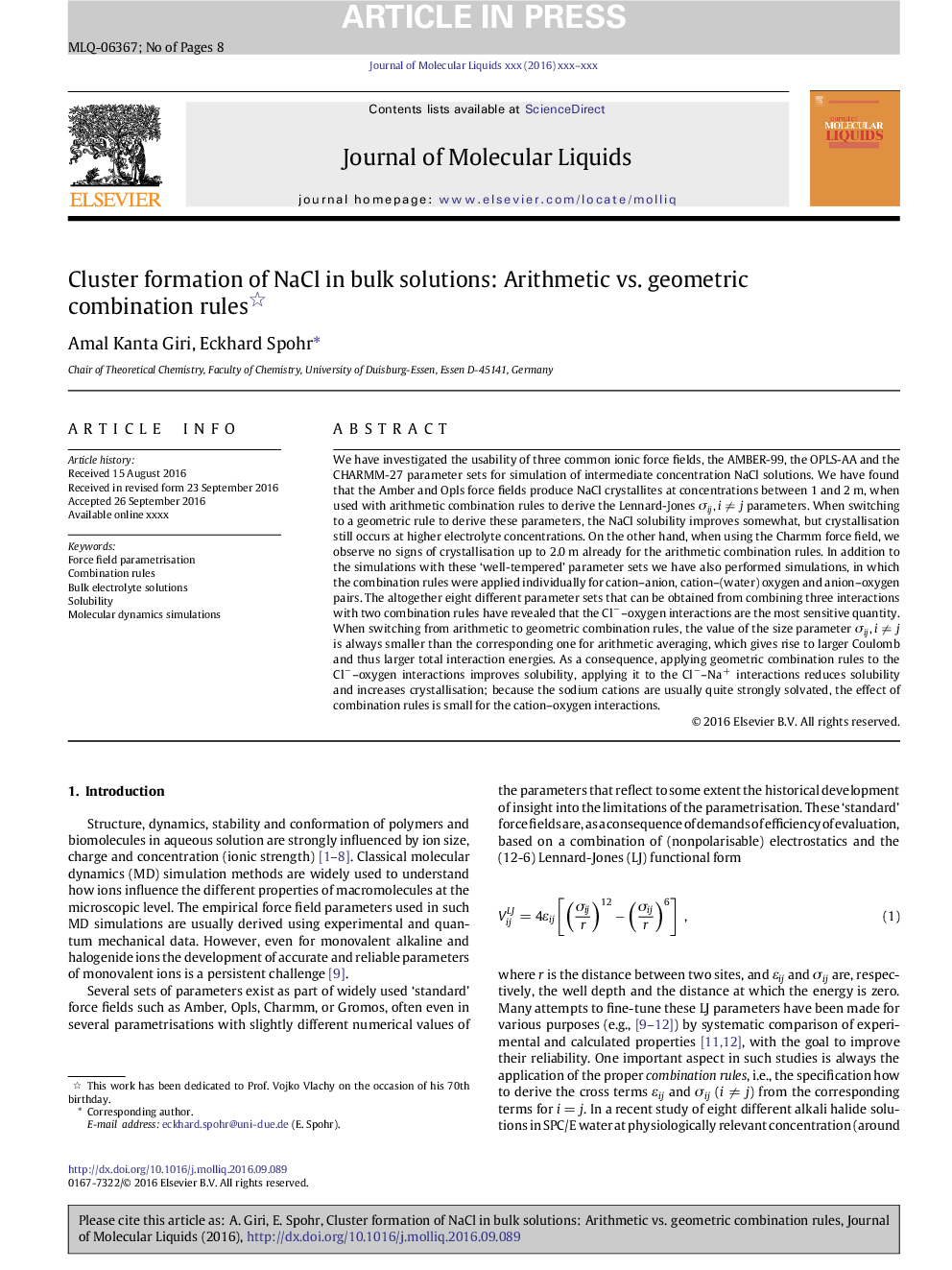| Article ID | Journal | Published Year | Pages | File Type |
|---|---|---|---|---|
| 5409412 | Journal of Molecular Liquids | 2017 | 8 Pages |
Abstract
We have investigated the usability of three common ionic force fields, the AMBER-99, the OPLS-AA and the CHARMM-27 parameter sets for simulation of intermediate concentration NaCl solutions. We have found that the Amber and Opls force fields produce NaCl crystallites at concentrations between 1 and 2 m, when used with arithmetic combination rules to derive the Lennard-Jones Ïij,iâ j parameters. When switching to a geometric rule to derive these parameters, the NaCl solubility improves somewhat, but crystallisation still occurs at higher electrolyte concentrations. On the other hand, when using the Charmm force field, we observe no signs of crystallisation up to 2.0 m already for the arithmetic combination rules. In addition to the simulations with these 'well-tempered' parameter sets we have also performed simulations, in which the combination rules were applied individually for cation-anion, cation-(water) oxygen and anion-oxygen pairs. The altogether eight different parameter sets that can be obtained from combining three interactions with two combination rules have revealed that the Cl â-oxygen interactions are the most sensitive quantity. When switching from arithmetic to geometric combination rules, the value of the size parameter Ïij,iâ j is always smaller than the corresponding one for arithmetic averaging, which gives rise to larger Coulomb and thus larger total interaction energies. As a consequence, applying geometric combination rules to the Cl â-oxygen interactions improves solubility, applying it to the Cl â-Na + interactions reduces solubility and increases crystallisation; because the sodium cations are usually quite strongly solvated, the effect of combination rules is small for the cation-oxygen interactions.
Related Topics
Physical Sciences and Engineering
Chemistry
Physical and Theoretical Chemistry
Authors
Amal Kanta Giri, Eckhard Spohr,
